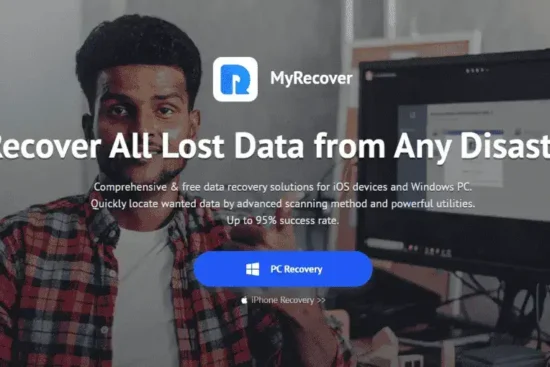
In recent years, cloud computing has emerged as a revolutionary technology that has transformed the way businesses and individuals store, access, and process data. The cloud offers numerous advantages, but it also comes with its own set of challenges. In this article, we will explore the pros and cons of cloud computing, shedding light on its impact on the digital landscape.
Pros of Cloud Computing:(Pros and Cons of Cloud Computing)
Scalability and Flexibility:(Pros and Cons of Cloud Computing)
Stability and flexibility are two key advantages of cloud computing that have revolutionized the way businesses operate and handle their data.
Firstly, cloud computing offers remarkable stability. Traditional on-premises infrastructure often requires significant investments in hardware, software, and maintenance to ensure uninterrupted operations. In contrast, cloud service providers maintain robust and highly available data centers, equipped with redundant systems and backup mechanisms.
This infrastructure is designed to handle unexpected events such as power outages or hardware failures, minimizing downtime and ensuring continuous service availability. By relying on the cloud, businesses can experience enhanced stability, reduced risk of data loss, and improved disaster recovery capabilities.

Secondly, cloud computing provides unparalleled flexibility to organizations. The cloud offers scalable resources that can be easily adjusted to meet changing business needs. Whether a business is experiencing rapid growth or seasonal fluctuations in demand, cloud infrastructure allows for seamless scaling up or down without the need for significant upfront investments.
This flexibility empowers businesses to optimize their resource allocation, ensuring efficient utilization of computing power and cost savings. Additionally, cloud services enable remote access to data and applications, facilitating remote work and enhancing collaboration across geographically dispersed teams.
The ability to access critical information and services from anywhere, at any time, greatly enhances organizational agility and empowers businesses to adapt to evolving market conditions swiftly.
At last, the stability and flexibility offered by cloud computing have transformed the business landscape. Cloud infrastructure’s inherent stability, coupled with its ability to scale resources and enable remote access, allows businesses to streamline their operations, reduce costs, and respond rapidly to market changes. As cloud technology continues to evolve, it is expected to play an increasingly significant role in driving innovation and competitiveness across industries.
- Cloud computing allows businesses to scale their resources up or down based on demand, offering unparalleled flexibility.
- It eliminates the need for physical infrastructure upgrades, enabling companies to quickly adapt to changing business requirements.
Cost Efficiency:(Pros and Cons of Cloud Computing)
Cloud computing has emerged as a cost-efficient solution for businesses across various industries. By leveraging the power of the cloud, companies can significantly reduce their IT expenses while gaining access to a range of scalable and flexible resources.
One of the primary cost advantages of cloud computing is its pay-as-you-go pricing model. Unlike traditional on-premises infrastructure, where businesses need to invest heavily in hardware, software licenses, and maintenance, cloud services allow organizations to pay only for the resources they consume.
This eliminates the need for upfront capital expenditure, enabling businesses to convert their IT costs into predictable operational expenses. Additionally, cloud providers benefit from economies of scale, allowing them to offer competitive pricing structures that are often more cost-effective than maintaining and upgrading in-house infrastructure.
Furthermore, cloud computing eliminates the need for businesses to invest in excess capacity. With the ability to scale resources up or down based on demand, companies can optimize their resource allocation, ensuring efficient utilization and cost savings. Cloud services provide agility and flexibility, enabling businesses to adapt rapidly to changing requirements without incurring additional hardware or software costs.

Moreover, cloud computing reduces indirect costs associated with IT infrastructure maintenance. By offloading the responsibility of managing and maintaining servers, networking equipment, and data centers to cloud service providers, businesses can free up their internal IT staff to focus on more strategic tasks.
This reduction in labor and operational costs allows companies to allocate resources more efficiently and achieve significant cost savings.
At last, cloud computing offers a cost-efficient solution for businesses by eliminating upfront investments, providing scalable resources, and reducing indirect costs. Adopting cloud services enables companies to optimize their IT expenditure, increase operational efficiency, and allocate resources more effectively.
As organizations continue to seek cost-effective solutions, cloud computing is poised to play a pivotal role in driving business growth and innovation.
- Cloud computing eliminates the need for significant upfront investments in hardware and software.
- Businesses can save money by paying only for the resources they use, rather than maintaining and managing on-premises infrastructure.
Accessibility and Collaboration:(Pros and Cons of Cloud Computing)
Cloud computing has emerged as a catalyst for transforming the way businesses operate, enabling unprecedented accessibility and fostering seamless collaboration among teams. By harnessing the potential of the cloud, organizations can break down barriers, transcend geographical limitations, and unlock a new era of innovation.
Cloud computing provides unparalleled accessibility to critical data and applications. With cloud-based services, employees can securely access information and resources from anywhere, at any time, using a variety of devices. This accessibility empowers businesses to embrace remote work arrangements, tap into global talent pools, and create a more diverse and inclusive workforce.
By enabling employees to collaborate and contribute regardless of their physical location, the cloud fosters a culture of inclusivity and breaks down the traditional boundaries of the workplace.
Moreover, the cloud acts as a central hub for collaboration, revolutionizing the way teams work together. Cloud-based collaboration tools facilitate real-time document sharing, simultaneous editing, and seamless communication. These tools empower teams to collaborate in a virtual environment, driving creativity, innovation, and efficiency.

By providing a platform for instant collaboration and knowledge sharing, the cloud streamlines workflows, eliminates silos, and enables cross-functional teams to work together seamlessly, regardless of their physical proximity.
In addition, cloud computing fuels the concept of co-creation, where multiple stakeholders can collaborate in the development and refinement of products and services. The cloud offers a secure and scalable environment for organizations to engage customers, partners, and even competitors in collaborative initiatives. By fostering a spirit of openness and shared knowledge, the cloud unlocks new possibilities for innovation and accelerates the pace of progress.
At last, cloud computing revolutionizes accessibility and collaboration, transcending physical boundaries and driving unprecedented levels of teamwork. The cloud’s accessibility enables businesses to embrace remote work and tap into global talent, fostering inclusivity and diversity.
Simultaneously, cloud-based collaboration tools empower teams to work together seamlessly, unleashing their creativity and accelerating innovation. As businesses continue to embrace the cloud, the boundaries of accessibility and collaboration will be further expanded, leading to a future where teamwork knows no limits.
- Cloud services provide users with ubiquitous access to data and applications from any location, fostering collaboration and remote work.
- Real-time document sharing and simultaneous editing enhance productivity and streamline teamwork.
Disaster Recovery and Data Backup:(Pros and Cons of Cloud Computing)
In the dynamic and unpredictable world of business, safeguarding critical data and ensuring business continuity are paramount. Cloud computing has emerged as a game-changer, revolutionizing disaster recovery and data backup practices with its unique blend of innovation, reliability, and cost-effectiveness.
The cloud offers businesses an unparalleled disaster recovery solution. Traditional on-premises backup systems often struggle to keep pace with evolving threats, such as natural disasters, cyberattacks, or hardware failures. Cloud-based disaster recovery provides a robust and scalable infrastructure that ensures rapid data recovery and minimal downtime.
By leveraging geographically dispersed data centers and redundant systems, the cloud can seamlessly replicate and distribute data, safeguarding it from localized disruptions. This distributed nature of the cloud ensures that businesses can quickly recover and resume operations, even in the face of unforeseen catastrophes.
Furthermore, cloud-based data backup transcends the limitations of traditional backup methods. Instead of relying on physical storage devices susceptible to damage or loss, the cloud offers a secure and reliable platform for storing and protecting data. Cloud backup services provide automated and continuous data replication, ensuring that critical information is securely stored offsite in multiple locations.

This approach mitigates the risk of data loss and streamlines the backup process, freeing up valuable resources within the organization. Additionally, cloud-based backup solutions often offer advanced features such as version control and point-in-time recovery, enabling businesses to restore specific data sets to desired states, further enhancing data integrity and business resilience.
Moreover, the cloud’s scalability and pay-as-you-go pricing model offer businesses cost-effective disaster recovery and data backup solutions. Organizations no longer need to invest heavily in costly hardware and infrastructure for offsite data storage or complex disaster recovery setups.
Instead, cloud services allow businesses to scale their backup and recovery capabilities as needed, paying only for the resources utilized. This scalability, coupled with the reduced upfront costs, empowers organizations of all sizes to implement robust disaster recovery and data backup strategies that were once exclusive to larger enterprises.
At last, cloud computing revolutionizes disaster recovery and data backup practices by offering a resilient, scalable, and cost-effective solution. The cloud’s distributed infrastructure ensures business continuity in the face of adversity, while its automated backup processes and secure data storage protect against data loss.
As businesses increasingly rely on cloud-based disaster recovery and data backup solutions, they can rest assured that their critical information is safe, accessible, and ready to restore at a moment’s notice. The cloud’s transformative power in this realm ensures that organizations can confidently navigate the unpredictable landscape of the modern business world.
- Cloud providers offer robust disaster recovery solutions, ensuring business continuity in the event of natural disasters or system failures.
- Automatic data backup and replication mechanisms protect against data loss, providing peace of mind.
Innovation and Integration:(Pros and Cons of Cloud Computing)
Cloud computing has emerged as a driving force behind innovation and seamless integration, revolutionizing the way businesses operate, collaborate, and deliver value. By harnessing the capabilities of the cloud, organizations can unlock new realms of creativity, accelerate time-to-market, and seamlessly integrate their systems and processes.
Cloud computing serves as a catalyst for innovation, providing businesses with the tools and resources they need to experiment, iterate, and bring new ideas to life. Cloud-based platforms and services offer a scalable and cost-effective environment for developing, testing, and deploying innovative solutions.
With the cloud, businesses can easily access cutting-edge technologies such as artificial intelligence, machine learning, and big data analytics, empowering them to derive valuable insights, automate processes, and drive transformative change.

The cloud’s agility and flexibility enable organizations to quickly adapt to market demands, experiment with new business models, and rapidly deliver innovative products and services that cater to evolving customer needs.
Moreover, the cloud facilitates seamless integration across systems, applications, and processes, breaking down silos and streamlining operations. Cloud-based integration platforms and APIs allow businesses to connect disparate systems and applications, enabling data and information to flow seamlessly across the organization. This integration not only enhances operational efficiency but also fosters collaboration and enables real-time decision-making.
By connecting various systems and empowering them to work together harmoniously, the cloud eliminates data bottlenecks, reduces manual efforts, and enhances overall productivity. The integration capabilities offered by the cloud enable organizations to create connected ecosystems that promote cross-functional collaboration and drive innovation through shared knowledge and insights.
Furthermore, the cloud serves as a platform for collaboration and co-creation, enabling organizations to connect with partners, customers, and even competitors. Cloud-based collaboration tools and platforms facilitate real-time communication, document sharing, and collaborative workflows, breaking down geographical barriers and fostering innovation through collective intelligence.
By embracing cloud-based collaboration, organizations can tap into diverse perspectives, leverage external expertise, and forge strategic alliances that drive innovation and fuel growth.
At last, cloud computing fuels innovation and seamless integration, enabling businesses to unleash their creative potential, streamline operations, and foster collaboration. By providing access to advanced technologies, facilitating system integration, and promoting collaboration across ecosystems, the cloud paves the way for organizations to break barriers, accelerate innovation, and stay ahead of the competition.
As businesses continue to leverage the power of the cloud, the possibilities for innovation and integration are boundless, shaping the future of industries and driving transformative change.
- Cloud platforms offer a vast ecosystem of tools and services, empowering businesses to innovate rapidly and experiment with new technologies.
- Seamless integration with other cloud-based services allows for easy adoption of new solutions and increased efficiency.
Cons of Cloud Computing:(Pros and Cons of Cloud Computing)
Security and Privacy:(Pros and Cons of Cloud Computing)
While cloud computing offers numerous benefits, it is crucial to address the concerns surrounding security and privacy. Organizations must carefully consider the potential drawbacks and take necessary precautions to safeguard their sensitive data and protect their digital assets.
One of the primary concerns with cloud computing is data security. Storing sensitive information in the cloud introduces the risk of unauthorized access, data breaches, and malicious attacks. Although cloud service providers implement robust security measures, no system is completely immune to vulnerabilities.
Businesses must exercise due diligence in selecting reputable and trustworthy cloud vendors, ensuring they have implemented rigorous security protocols and compliance measures. Additionally, organizations should employ encryption techniques to safeguard data both in transit and at rest, minimizing the risk of unauthorized access and data exposure.

Privacy is another area of concern in cloud computing. When data is stored in the cloud, organizations relinquish some control over their data and rely on cloud service providers to handle and protect it. This introduces potential privacy risks, especially if the cloud provider operates in different jurisdictions with varying data protection laws.
Organizations must carefully review privacy policies, service level agreements (SLAs), and data governance practices to ensure compliance with applicable regulations and to maintain control over their data. Implementing robust access controls, user authentication mechanisms, and regularly monitoring for any unauthorized access attempts can help mitigate privacy risks associated with cloud computing.
Furthermore, cloud computing introduces challenges related to data location and data sovereignty. Data may be stored in multiple data centers located in different countries or regions, making it difficult to determine where exactly the data resides.
This can raise concerns about compliance with specific regulations or industry standards. Organizations should work closely with cloud service providers to ensure transparency and obtain clear documentation on data storage and residency, ensuring compliance with applicable legal and regulatory requirements.
At last, while cloud computing offers numerous advantages, security and privacy concerns must be carefully addressed. Organizations should conduct thorough risk assessments, choose reputable cloud service providers, implement robust encryption and access controls, and stay vigilant against evolving threats.
By proactively addressing these challenges, businesses can mitigate risks, safeguard their data, and maintain the confidentiality, integrity, and availability of their information assets in the cloud.
- Storing data in the cloud raises concerns about unauthorized access, data breaches, and compliance with data protection regulations.
- Businesses must carefully evaluate the security measures implemented by cloud providers and ensure proper encryption and access controls.
Internet Dependency:(Pros and Cons of Cloud Computing)
In today’s digitally connected world, businesses and individuals heavily rely on the internet for various activities. However, this growing dependency on the internet comes with its own set of challenges that need to be carefully addressed to ensure resilience and continuity.
One of the primary concerns with internet dependency is the risk of disruptions. Businesses that heavily rely on the internet for their operations face the potential impact of network outages, service disruptions, or cyberattacks. Such events can result in significant downtime, loss of productivity, and financial losses.
To mitigate these risks, organizations should establish contingency plans, redundant network connections, and backup systems to ensure business continuity in the event of internet service disruptions. Additionally, businesses should implement robust cybersecurity measures to protect against cyber threats that could compromise internet infrastructure or result in data breaches.

Another challenge posed by internet dependency is the digital divide. While internet access has become more widespread, there are still regions and communities with limited or no connectivity. This digital divide can create inequalities in terms of access to information, education, job opportunities, and economic growth.
Governments, organizations, and internet service providers need to work together to bridge this divide by investing in infrastructure development, expanding connectivity, and implementing policies that promote equal access to the internet for all.
Furthermore, internet dependency raises concerns about data privacy and security. With increasing amounts of personal and sensitive data being transmitted and stored online, the risk of data breaches and unauthorized access becomes more significant.
Organizations must prioritize robust cybersecurity practices, including encryption, secure data storage, regular security audits, and employee training to protect against potential cyber threats. Additionally, individuals must be aware of their digital footprint, practice safe online behaviors, and be cautious about sharing personal information to mitigate privacy risks.
Moreover, internet dependency can lead to a loss of offline skills and human interaction. As more activities shift to online platforms, there is a potential decline in face-to-face interactions, interpersonal skills, and physical activities. Balancing online and offline activities is crucial for maintaining social connections, promoting mental well-being, and nurturing a healthy lifestyle.
In summary, while internet dependency offers numerous advantages and opportunities, it is essential to address the associated challenges. Businesses and individuals must be prepared to mitigate the risks of internet disruptions, bridge the digital divide, prioritize data privacy and security, and maintain a healthy balance between online and offline activities.
By addressing these challenges proactively, we can build resilience in an internet-dependent world and leverage the power of connectivity while minimizing the potential drawbacks.
- Cloud computing heavily relies on an internet connection, and service disruptions or slow connectivity can hinder access to critical resources.
- Organizations need to have contingency plans in place to mitigate the impact of internet outages.
Limited Control and Vendor Lock-in:(Pros and Cons of Cloud Computing)
Cloud computing has revolutionized the way businesses operate, offering scalability, cost efficiency, and flexibility. However, it is crucial to recognize and address the challenges associated with limited control and vendor lock-in when embracing cloud computing solutions.
Limited control is a significant concern in cloud computing. When organizations migrate their systems and data to the cloud, they entrust a significant portion of their IT infrastructure and operations to cloud service providers. This transfer of control raises questions about data governance, customization options, and the ability to tailor services to specific business needs.
Organizations may face limitations in implementing custom configurations or accessing certain administrative functions, as these aspects often fall within the purview of the cloud provider.
It is essential for businesses to thoroughly assess and negotiate service level agreements (SLAs) to ensure that their specific control requirements are met, and to have a clear understanding of the extent to which control can be retained or exerted over their systems and data in the cloud environment.
Vendor lock-in is another concern that organizations should consider when adopting cloud computing solutions. As businesses become reliant on a particular cloud service provider, migrating to another provider or bringing services back in-house can be complex and costly.

Proprietary technologies, specialized APIs, and data formats specific to a particular provider may hinder seamless transition or interoperability with alternative solutions. To mitigate the risk of vendor lock-in, organizations should carefully evaluate cloud providers, consider multi-cloud or hybrid cloud strategies, and establish data portability and interoperability standards.
These measures empower businesses to retain flexibility and leverage the benefits of cloud computing without being overly dependent on a single vendor.
Maintaining control and avoiding vendor lock-in requires proactive management and planning. Organizations should conduct thorough due diligence when selecting cloud service providers, considering factors such as reputation, reliability, data security practices, and their ability to address specific control and customization requirements.
Additionally, implementing strategies that promote portability, data interoperability, and standardized interfaces enable businesses to maintain flexibility and easily transition between cloud providers if necessary.
At last, while cloud computing offers significant advantages, it is important to address the challenges of limited control and vendor lock-in. Organizations should carefully evaluate their control requirements, negotiate SLAs, and implement strategies to mitigate vendor lock-in risks.
By maintaining a proactive approach to cloud vendor management and maintaining flexibility, businesses can effectively harness the benefits of cloud computing while retaining control over their systems, data, and IT operations.
- Organizations that rely on cloud services may experience a loss of control over their infrastructure and data.
- Vendor lock-in can occur when migrating applications or data between different cloud providers becomes challenging or costly.
Performance and Downtime:(Pros and Cons of Cloud Computing)
While cloud computing offers numerous benefits, it is essential to address the potential challenges associated with performance and downtime to ensure smooth and uninterrupted operations.
Performance is a critical consideration in cloud computing. Although cloud service providers strive to offer high-performance infrastructure, factors such as network latency, bandwidth limitations, and shared resources can impact application performance.
Businesses must carefully assess their performance requirements and evaluate the capabilities of potential cloud providers. By conducting performance testing and monitoring, organizations can identify and optimize any bottlenecks or performance issues to ensure optimal system performance and user experience in the cloud environment.

Downtime, or service disruptions, is another concern that organizations must consider. Despite robust infrastructure and redundancy measures implemented by cloud service providers, the possibility of downtime cannot be entirely eliminated. Network outages, hardware failures, or even natural disasters can impact the availability of cloud services.
To mitigate the risks of downtime, businesses should consider disaster recovery plans, data backup strategies, and redundancy options. By implementing failover mechanisms, distributing workloads across multiple availability zones or regions, and regularly testing the effectiveness of these measures, organizations can minimize the impact of downtime and ensure business continuity in the face of unforeseen disruptions.
Building upon the earlier discussion on limited control and vendor lock-in, organizations can leverage their control and choice of cloud providers to address performance and downtime concerns. Thoroughly evaluating the performance capabilities, service level agreements, and track record of potential providers allows businesses to select providers that offer the necessary performance guarantees and resilience measures.
Moreover, implementing multi-cloud or hybrid cloud strategies, where workloads are distributed across multiple cloud providers or a combination of cloud and on-premises infrastructure, can enhance performance and minimize the impact of downtime by leveraging the strengths of different platforms and mitigating risks associated with a single cloud provider.

At last, performance and downtime are considerations that need to be carefully addressed when embracing cloud computing. Organizations should conduct thorough performance evaluations, monitor and optimize system performance, and implement strategies to minimize the impact of downtime.
By selecting reliable cloud providers, implementing disaster recovery measures, and adopting multi-cloud or hybrid cloud approaches, businesses can enhance performance, mitigate downtime risks, and ensure the availability and reliability of their systems and services in the cloud environment.
- Cloud performance can vary based on factors such as network latency, server load, and geographic location.
- Downtime or service disruptions can occur, impacting business operations, and organizations may have limited control over resolving such issues.
Regulatory Compliance:
- Companies operating in highly regulated industries may face challenges in ensuring compliance with industry-specific regulations when utilizing cloud services.
- It is crucial to assess whether cloud providers meet the required compliance standards and provide necessary documentation.
Conclusion of Pros and Cons of Cloud Computing:
Cloud computing has revolutionized the digital landscape by offering scalable, cost-effective solutions that foster collaboration and innovation. However, organizations must carefully consider the pros and cons before fully embracing the cloud.
By addressing security concerns, internet dependency, and potential vendor lock-in, businesses can maximize the benefits while mitigating the challenges. As technology continues to evolve, cloud computing remains a powerful tool that empowers businesses to adapt, compete, and thrive in the digital era.
You Can also see other article on our website and also help us to make a school that is totally free for every children in Pakistan by buying any product on Amazon through our refferal link or you can contact us to support us for making education free by donating us.




Leave a Reply
You must be logged in to post a comment.